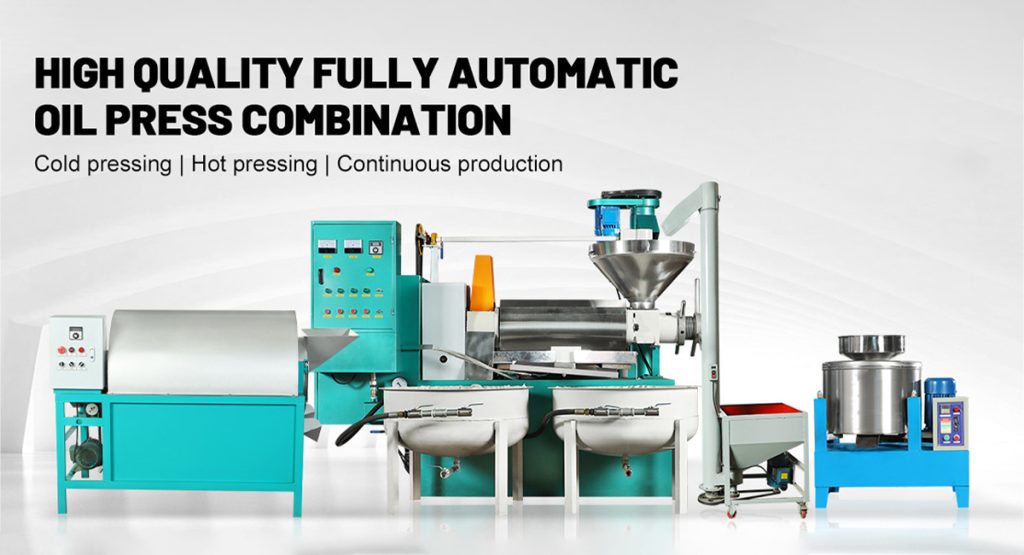Hydraulic oil press and spiral oil press are two common oil crop oil pressing equipment, which have significant differences in pressing principles, applicable oil materials, oil yield and efficiency, equipment advantages and disadvantages. The following is a detailed comparison of these two oil presses:
- Principle of squeezing
- Hydraulic oil press: using a high-pressure hydraulic system, hydraulic oil is pumped into the hydraulic cylinder through a high-pressure oil pump, generating enormous pressure and forcing the oil in the oil to be squeezed out. This pressing method is gentle, causes minimal damage to the oil, does not generate excessive heat, and is suitable for occasions that require high oil quality, such as cold pressing olive oil, walnut oil, etc.
- Spiral oil press: Using an electric motor to drive the spiral spindle to rotate, the oil is squeezed and rubbed by the pushing force of the spiral. As the squeezing chamber space gradually shrinks, the oil in the oil is squeezed out. This method is highly efficient and suitable for continuous production and processing of large amounts of oil, but it may generate a certain amount of heat, which may affect the natural composition of the oil.
- Applicable oil materials
- Hydraulic oil press: More suitable for oilseeds with high oil content and high oil quality requirements, such as olives, peanuts, sesame, etc., especially suitable for cold pressing processes that require maintaining the original flavor and nutritional components of oilseeds.
- Spiral oil press: suitable for processing oilseeds with relatively low oil content or high oil efficiency requirements, such as soybeans, rapeseed, cottonseeds, etc., suitable for large-scale commercial production.


